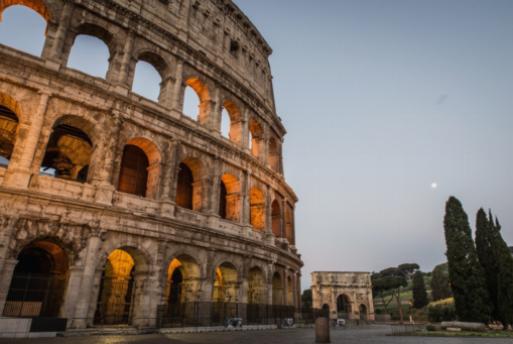Step back in time and immerse yourself in the captivating world of ancient Roman temples, where echoes of a pagan past still linger. From the symbolic significance of the Temple of Saturn to the mysterious rituals of the Vestal Virgins at the Vesta Temple, each sacred site offers a unique glimpse into the religious practices and beliefs of the ancient Romans. Join us as we explore the grandeur of Jupiter Optimus Maximus and the duality of love and power at the Temple of Venus and Rome. Prepare to be transported to a bygone era where gods and goddesses reigned supreme, and the architecture of these temples stood as a testament to the rich cultural heritage of Rome.

Temple of Saturn: Symbolism and Significance in Ancient Rome
The Temple of Saturn, located in the Roman Forum, was one of the most important religious buildings in Ancient Rome. Built in the 4th century BC, it served as a symbol of Saturn, the god of wealth, agriculture, and time. The temple was also associated with Saturn's father, Uranus, and was believed to house the state treasury.
The significance of the Temple of Saturn was evident in various rituals and festivals held throughout the year. One of the most important celebrations was the Saturnalia, a festival in honor of Saturn held in December. During this time, restrictions were lifted, and the social order was temporarily reversed, symbolizing a return to the mythical Golden Age ruled by Saturn.
The temple itself was a grand structure, with eight columns on the front and a statue of Saturn inside. The inscription "Senatus Populusque Romanus" (The Senate and People of Rome) was carved on the pediment, emphasizing the temple's importance as a public building. The Temple of Saturn served as a focal point for political and religious ceremonies, as well as a symbol of Rome's prosperity and power.
Overall, the Temple of Saturn was a central feature of religious and civic life in Ancient Rome, embodying the beliefs and values of Roman society. Its symbolism and significance reflected the importance of Saturn as a god of wealth and agriculture, as well as the role of religion in shaping Roman culture.
Vesta Temple: Unraveling the Mysteries of the Vestal Virgins
The Vesta Temple in Ancient Rome was dedicated to the goddess Vesta, the guardian of the hearth and home. Within this sacred temple resided the Vestal Virgins, priestesses who were chosen to serve Vesta and maintain the eternal flame that symbolized the continuity and prosperity of the Roman state. These Vestal Virgins took vows of chastity and devoted their lives to tending the sacred fire and performing rituals to ensure the protection and wellbeing of Rome. The role of the Vestal Virgins was highly esteemed in Roman society, as they were seen as essential to the spiritual and moral fabric of the city. Despite their prestigious position, the Vestal Virgins lived a life of strict discipline and seclusion, as any violation of their vows was believed to bring misfortune and calamity upon Rome. Through their dedication and piety, the Vestal Virgins were revered as the embodiment of Roman virtue and the guardians of the city's prosperity.
Jupiter Optimus Maximus: Exploring the Largest Temple of Ancient Rome
The Temple of Jupiter Optimus Maximus was the largest temple in Ancient Rome, dedicated to the supreme deity of the Roman pantheon. Built on the Capitoline Hill, this magnificent temple served as a symbol of Roman power and authority. The temple was adorned with grand columns and adorned with statues of Jupiter and other important deities. It stood as a testament to the religious devotion and reverence of the Roman people towards their gods. The Temple of Jupiter Optimus Maximus was not only a place of worship, but also a center of political and social activity, where important ceremonies and rituals took place to honor the gods and ensure their favor upon the Roman Empire. This grand temple remains a significant archaeological site, offering a glimpse into the religious practices and beliefs of the ancient Romans.
Temple of Venus and Rome: A Dual Tribute to Love and Power
The Temple of Venus and Rome stands as a testament to the intricate relationship between love and power in ancient Roman society. As a dual tribute, this majestic structure served as a sanctuary for worshippers seeking guidance and blessings in matters of both the heart and political influence.
Dedicated to Venus, the goddess of love and beauty, the temple embodied the romantic ideals of the Roman people. Devotees would offer prayers and sacrifices to seek Venus's favor in matters of relationships, fertility, and harmony. The temple's intricate architecture and artistic embellishments further emphasized the importance of love and passion in Roman culture.
On the other hand, the Temple of Rome paid homage to the divine power and authority of the city itself. As the capital of a vast empire, Rome exuded strength and dominance, and the temple symbolized the political and military prowess of the Roman state. Worshippers would pray for protection, victory in battle, and the prosperity of the empire as a whole.
The juxtaposition of these two deities within a single temple highlights the complex nature of Roman society, where love and power were intricately intertwined. The Temple of Venus and Rome stands as a testament to the duality of human experience, where individuals sought both emotional fulfillment and societal influence through their religious beliefs and practices.
